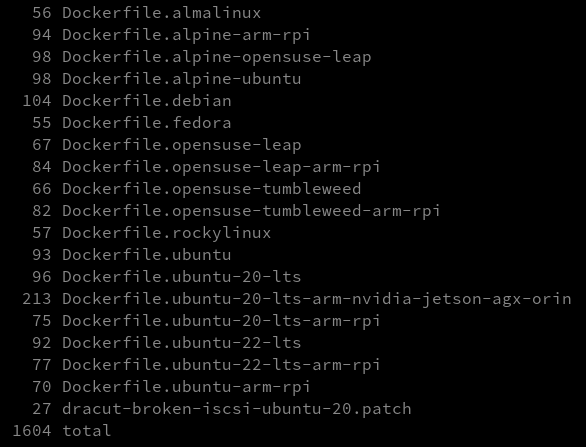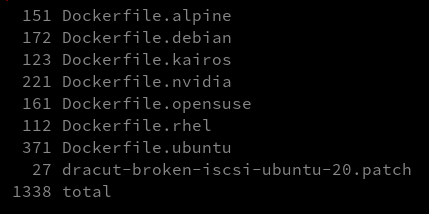How We Rebuilt Kairos building From the Ground Up
How We Rebuilt Kairos building From the Ground Up
🧱 Introduction
Building Kairos has always been about more than assembling images — it’s about shaping a flexible, powerful OS tailored for the edge. Over the past couple of years, we’ve learned a lot while navigating how to build and maintain Kairos across a growing list of base distributions, architectures, and board-specific targets.
Today, we’re excited to introduce something that marks a turning point in how Kairos is built: kairos-init.
This post isn’t just about a new tool. It’s about simplifying complexity, rediscovering clarity, and embedding hard-earned lessons into something lean and extensible. If you’ve followed our journey, you’ll know that we’ve gone from Dockerfiles to Earthly, and now to a new approach centered on declarative simplicity with Yip.
In this post, we’ll take you behind the scenes:
- Why the old ways worked (until they didn’t)
- How we outgrew our tooling
- What
kairos-initchanges — and why it matters
This is the story of how we rebuilt the foundation of Kairos, one layer at a time.
🐳 The Early Days: Building with Dockerfiles
When Kairos first took shape, our needs were simple. We wanted a predictable, repeatable way to turn a base Linux distribution into a fully working Kairos image. And at the time, the most straightforward path was through a set of handcrafted Dockerfiles — one for each supported base.
Need Kairos on Ubuntu? There was a Dockerfile for that. OpenSUSE? Another one. Want to tweak something for a Raspberry Pi or test an Alpine variant? Copy, paste, modify.
This worked — until it didn’t.
At first, it was empowering. We could iterate quickly, test changes, and get a Kairos image up and running in no time. Each Dockerfile acted like a scriptable recipe for image creation. But as we started expanding support for more:
- 🧱 Distributions (Ubuntu 24.04, 22.04, 20.04, OpenSUSE, Alpine, Rocky, Fedora…)
- 📦 Releases (LTS, rolling, and experimental flavors across versions)
- ⚙️ Architectures (x86_64, ARM64)
- 📦 Boards and platforms (Raspberry Pi, NVIDIA Jetson, cloud providers…)
… the number of Dockerfiles exploded.

Kairos Dockerfiles in the wild (Version 2.3.0)
Kairos Dockerfiles in the wild (Version 2.3.0)
Maintaining them became a slow grind. Every distro had its quirks. Every version bump required tweaks. Repeating common steps across files introduced subtle bugs. And worst of all, it was hard to scale — we were reinventing the same process in N different places, each slightly different, each easy to break.
We needed a better way.
🌍 Scaling Painfully: Enter Earthly
As the number of supported distros, architectures, and boards grew, so did the pain of managing our Dockerfiles. It wasn’t just about duplication anymore — it was about orchestration, coordination, and staying sane across a forest of moving parts.
So we took the next step and adopted Earthly.
Earthly gave us a powerful framework to unify and modularize our builds. Instead of one Dockerfile per case, we could define reusable steps, build pipelines, and cache logic across flavors and platforms. It brought real structure to our chaos.
With Earthly, we gained:
- 🔁 Reusable modules for common build logic
- 🧩 Parameterized builds across distros and versions
- 🧠 Smarter caching, which cut build times drastically
- 🤖 Better CI integration, especially in GitHub Actions
- 🏗️ Cross-architecture support (building ARM images from x86 machines)
It was a massive improvement. Kairos became easier to scale, easier to extend, and more robust in CI/CD pipelines. We could merge several Dockerfiles into a single one for that given Flavor and make earthly trigger the right steps based on the target architecture or version.

Less lines is always better, right? (Version 3.3.1)
But the cost of complexity caught up with us.
Earthly was powerful, but also heavy. Setting up the environment required more tooling and context. Onboarding new contributors meant explaining layers of build abstraction. And eventually, even Earthly couldn’t fully hide the fact that we were fighting the complexity we had slowly built up.
As our use cases expanded — with more devices, more customization, more flavors — our build logic became a tangled web of conditionals and overrides.

The Earthly pipeline grows instead (Version 3.3.1)
We needed a reset. A system built from the start for clarity and adaptability.
🧨 Reaching the Breaking Point
By this stage, we had all the signs of a powerful yet brittle system.
Every new board support request — whether for a Jetson device, RPi variant, or some obscure industrial box — meant another round of “how do we fit this into the Earthly pipeline without breaking 10 other things?” Even small changes to the build logic carried unintended ripple effects. Maintenance became a game of regression whack-a-mole.
Our internal complexity had quietly outpaced the benefits of our tooling.
- We were juggling multiple abstraction layers
- Supporting a new architecture meant rewriting or extending multiple Earthfiles
- Troubleshooting builds required context-switching between tools and environments
- Most importantly, it became hard for contributors to participate
That’s when we stopped and asked: What if we could start fresh?
The answer was kairos-init.
🛠️ We Tried Other Tools First
Before diving into kairos-init, we explored other tools and frameworks hoping to find a better fit. But none of them quite matched the specific constraints of our ecosystem — building across multiple distros, versions, and architectures in a consistent, maintainable way.
So, we did what every developer dreams of: we built our own.
✨ The Breakthrough: kairos-init and Yip
kairos-init is a CLI tool that encapsulates everything needed to transform any base Linux image into a fully Kairos system — with nothing more than a standard Dockerfile.
By running kairos-init BUILD in a Dockerfile, it:
- Inspects the base image
- Generates a Yip configuration
- Executes that config to:
- Install necessary packages
- Add the Kairos framework (binaries, configs, init hooks)
- Patch the initramfs
- Link kernel files
- Apply any workarounds or tweaks
The result is a container image that’s Kairos-ready — no extra steps, no complex layering.
You can then:
- Use it as an upgrade image
- Extend it with Kubernetes runtimes like
k3sork0susing flags - Convert it into various formats with AuroraBoot:
- ISO
- Raw image
- Cloud image
- PXE bootable
- EFI Unified System Image
And because it’s just a Dockerfile, it drops right into any existing workflow:
- CI/CD pipelines
- Local testing
- Version-controlled infra repos
🌤 A Cleaner Future
With kairos-init, we’ve:
- Simplified builds down to one step
- Removed the need for Earthly or complex pipelines
- Made Kairos accessible to new contributors and integrators
- Enabled future growth without growing technical debt
We’re no longer managing complexity — we’ve replaced it with clarity.
🔭 What’s Next
What’s ahead:
- More
kairos-initexamples and docs - Deep dives on Yip
- Custom build guides
- Community use cases
We’re also eager to hear how you use it — tag us, open issues, or just say hi.
🧭 Conclusion
From handcrafted Dockerfiles to Earthly-powered pipelines and now to a clean, declarative build system — this journey has been about making Kairos better not just for us, but for you.
With kairos-init, we’ve laid the groundwork for a more open, composable, and hackable future.
Thanks for building with us. 🚀